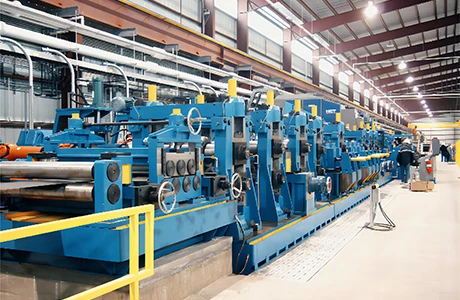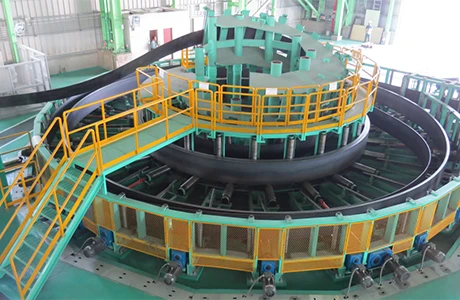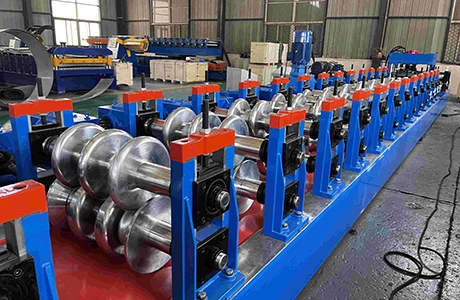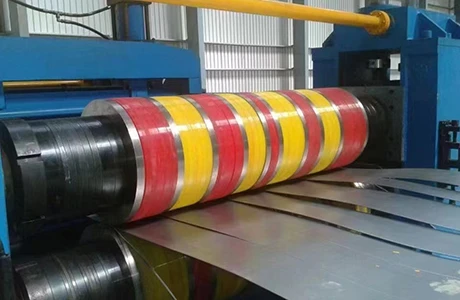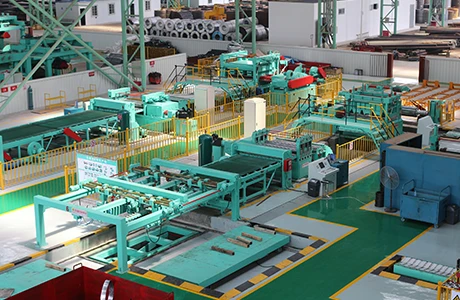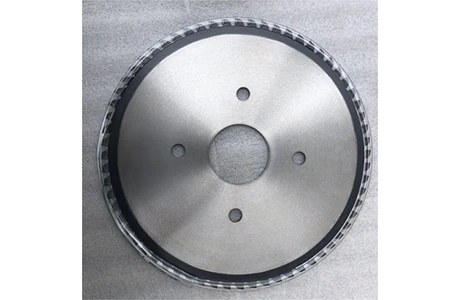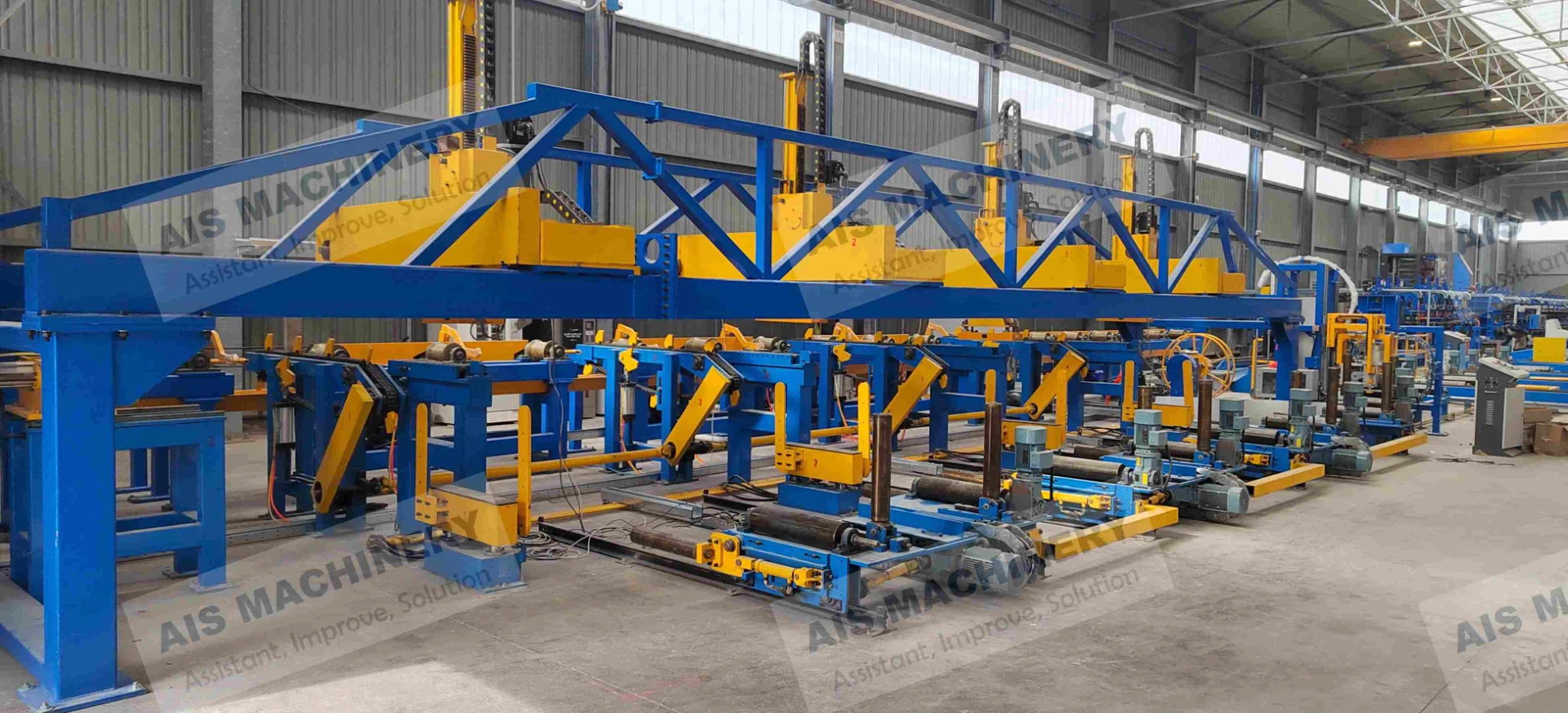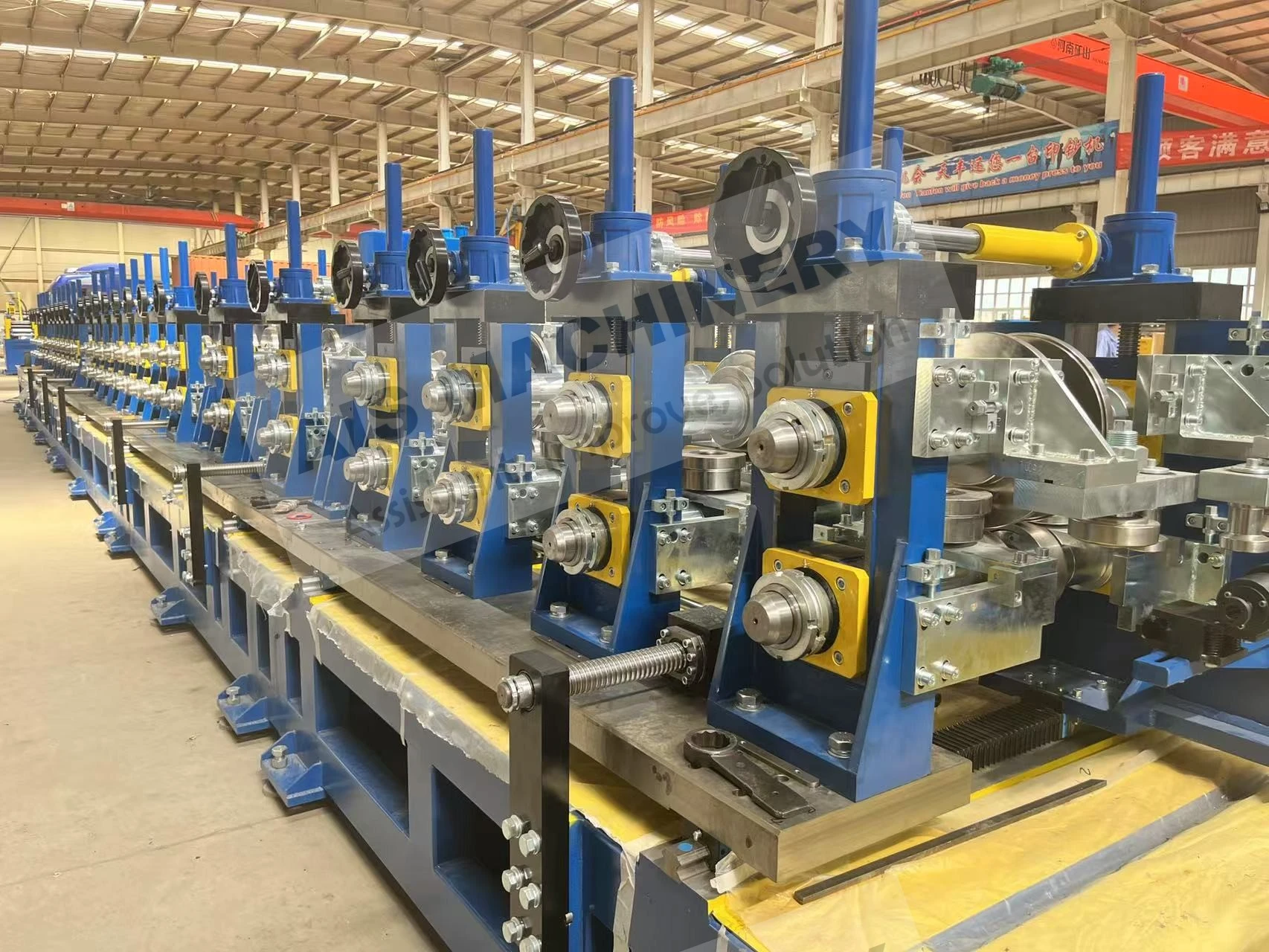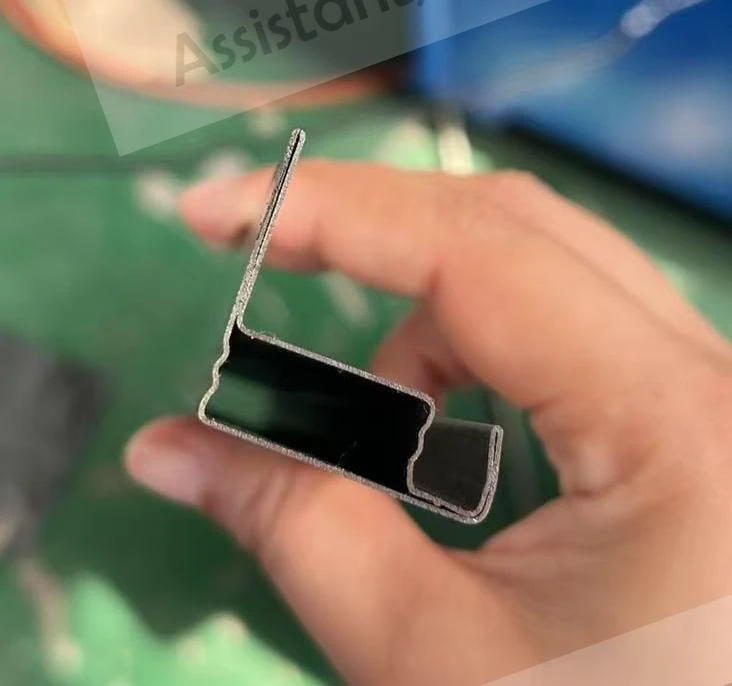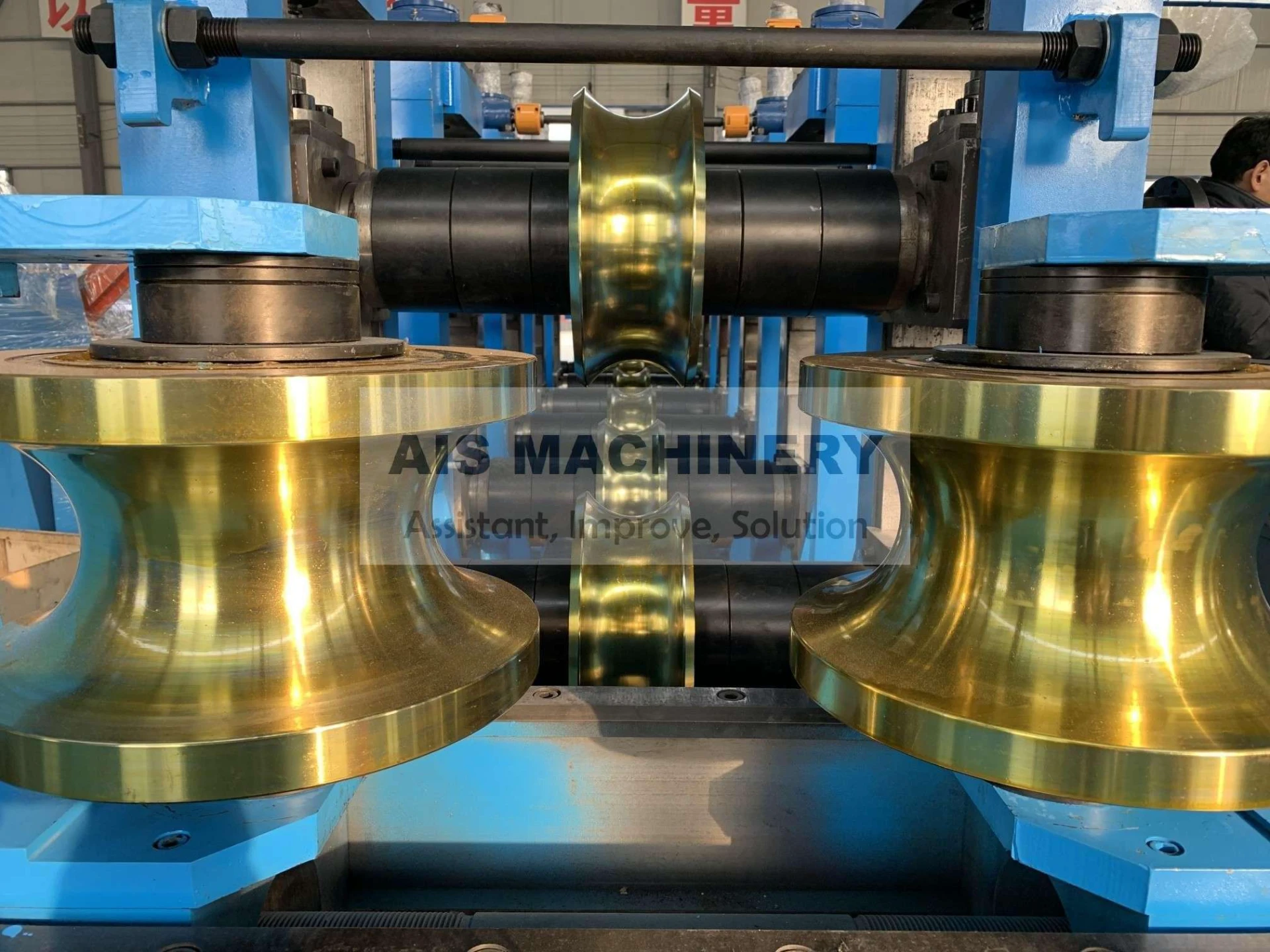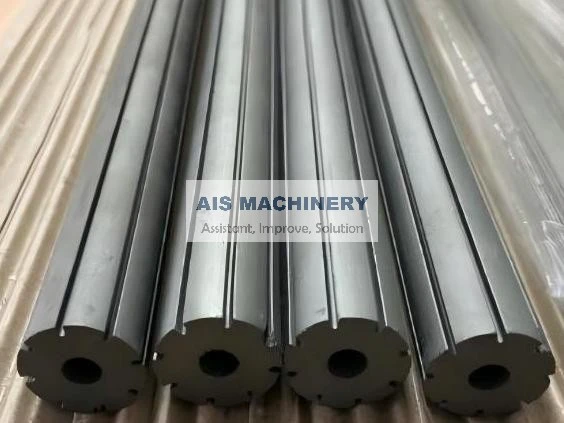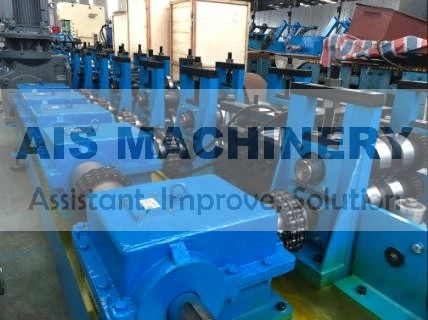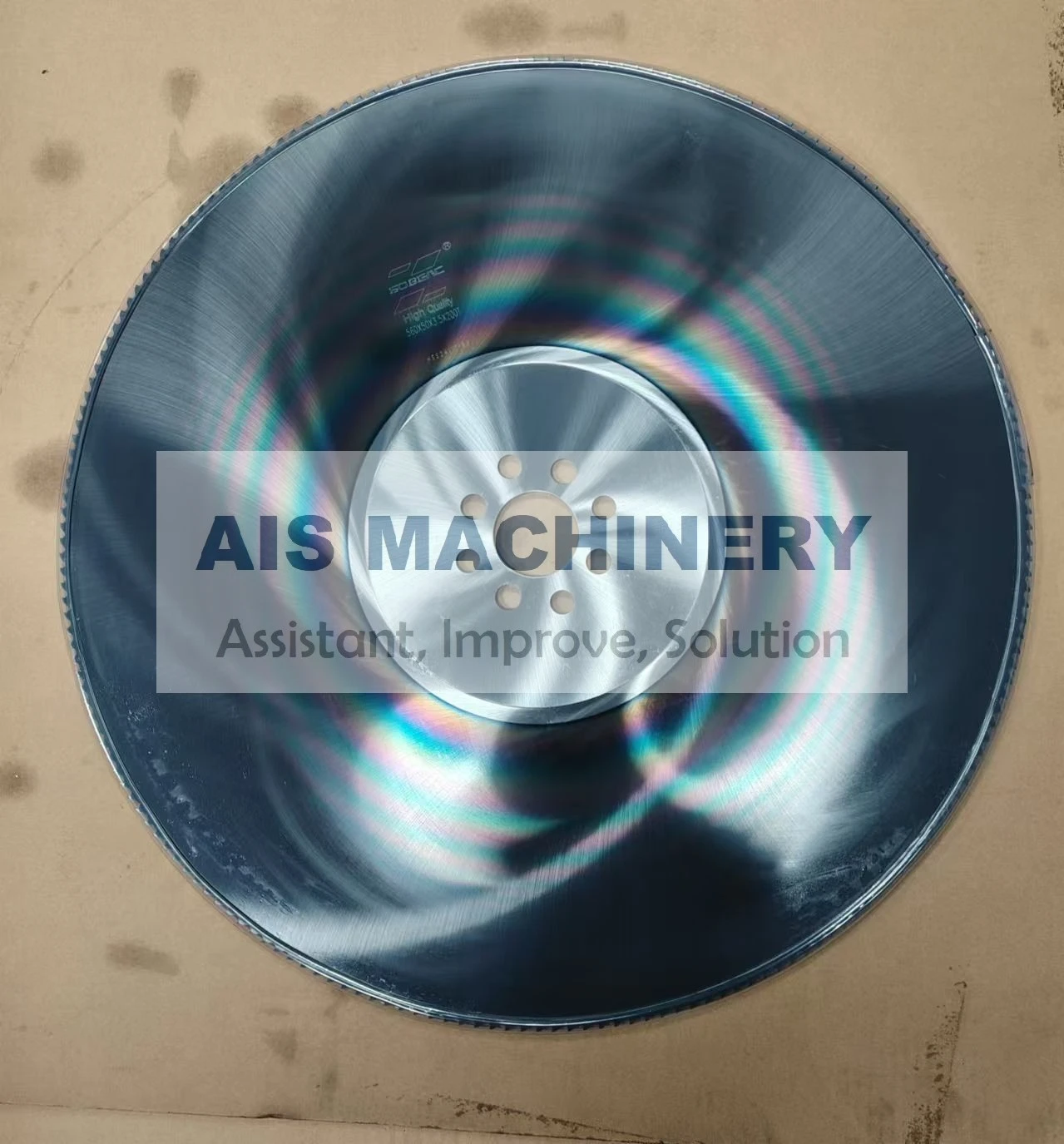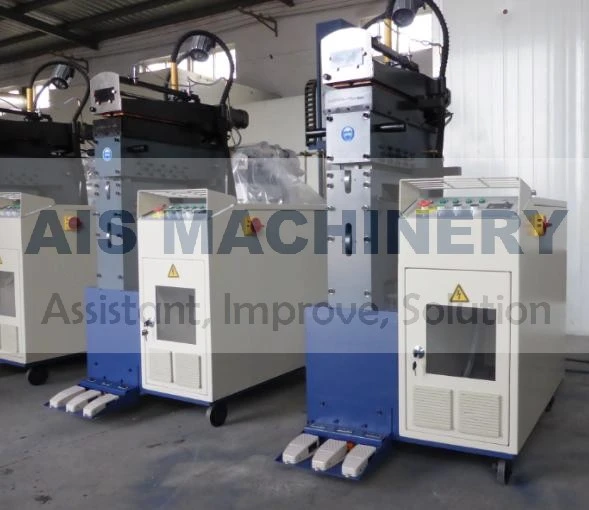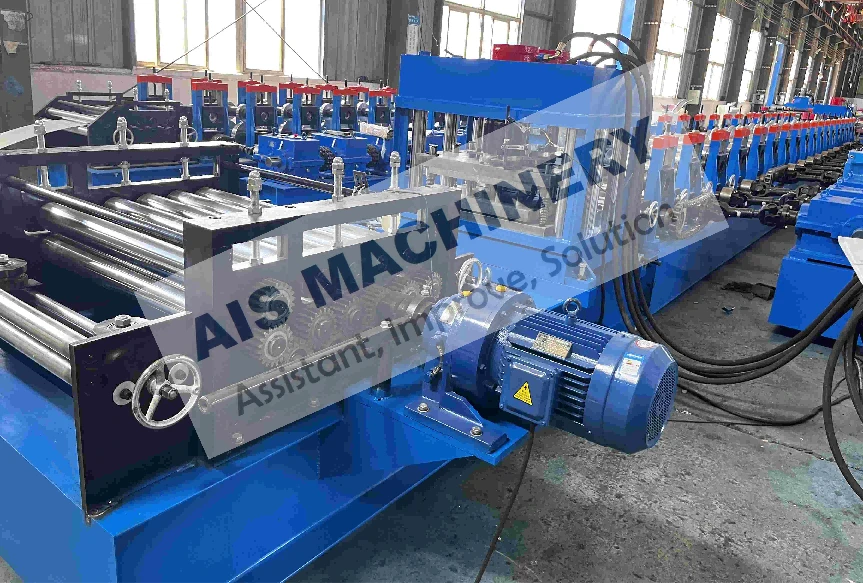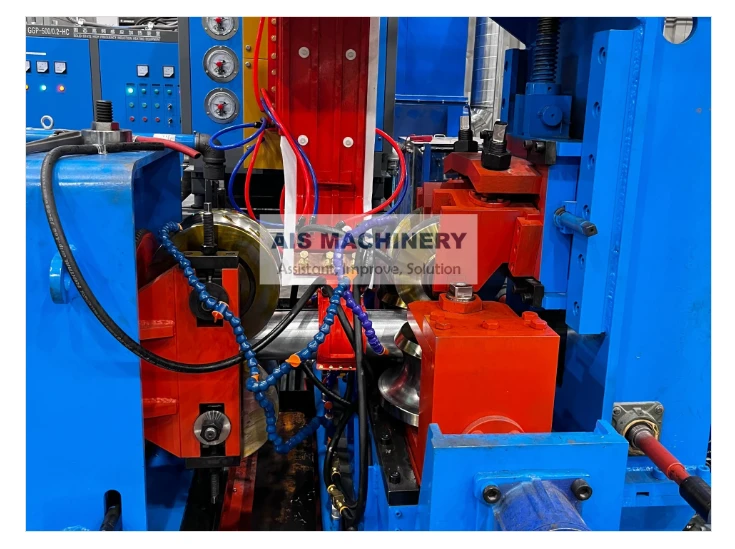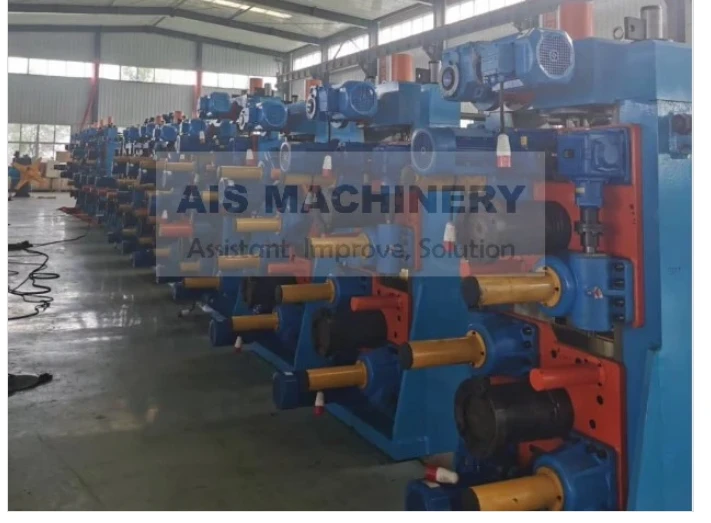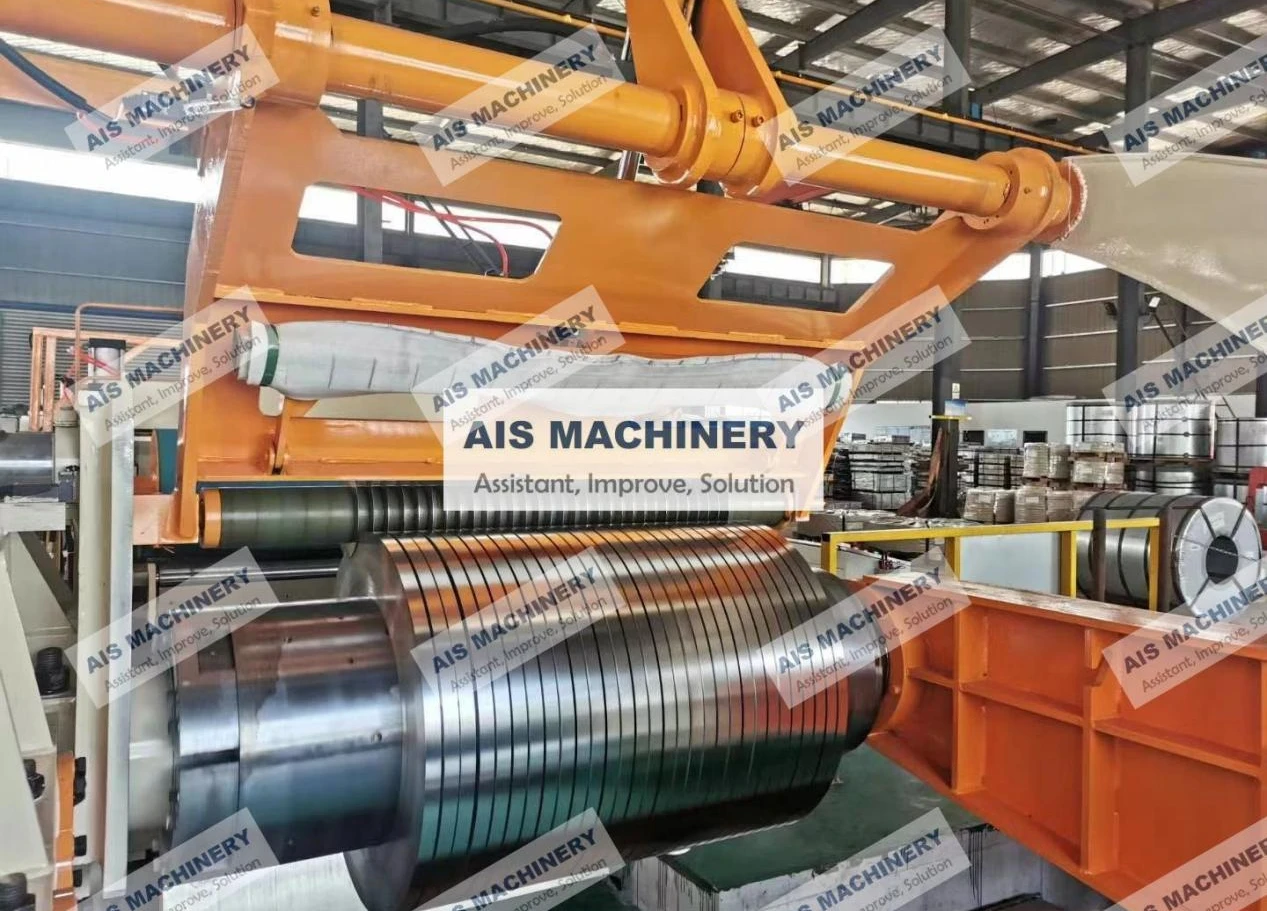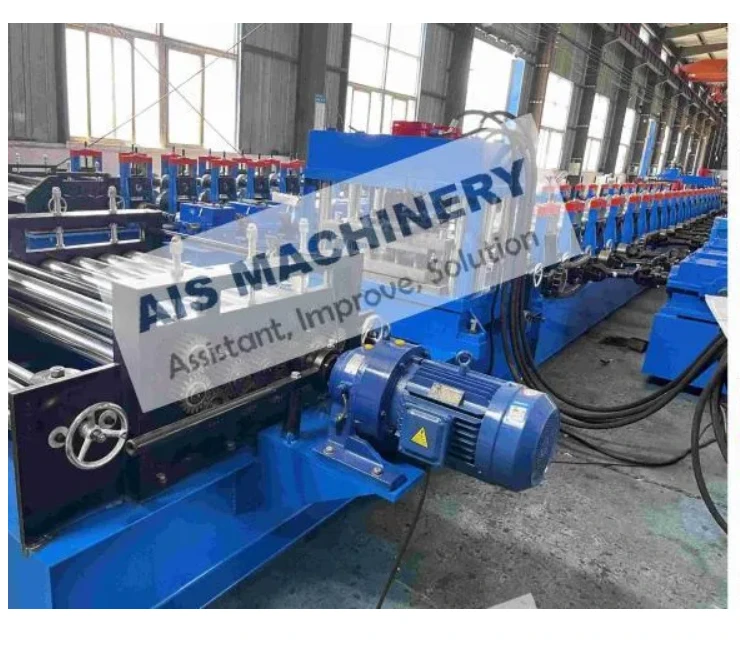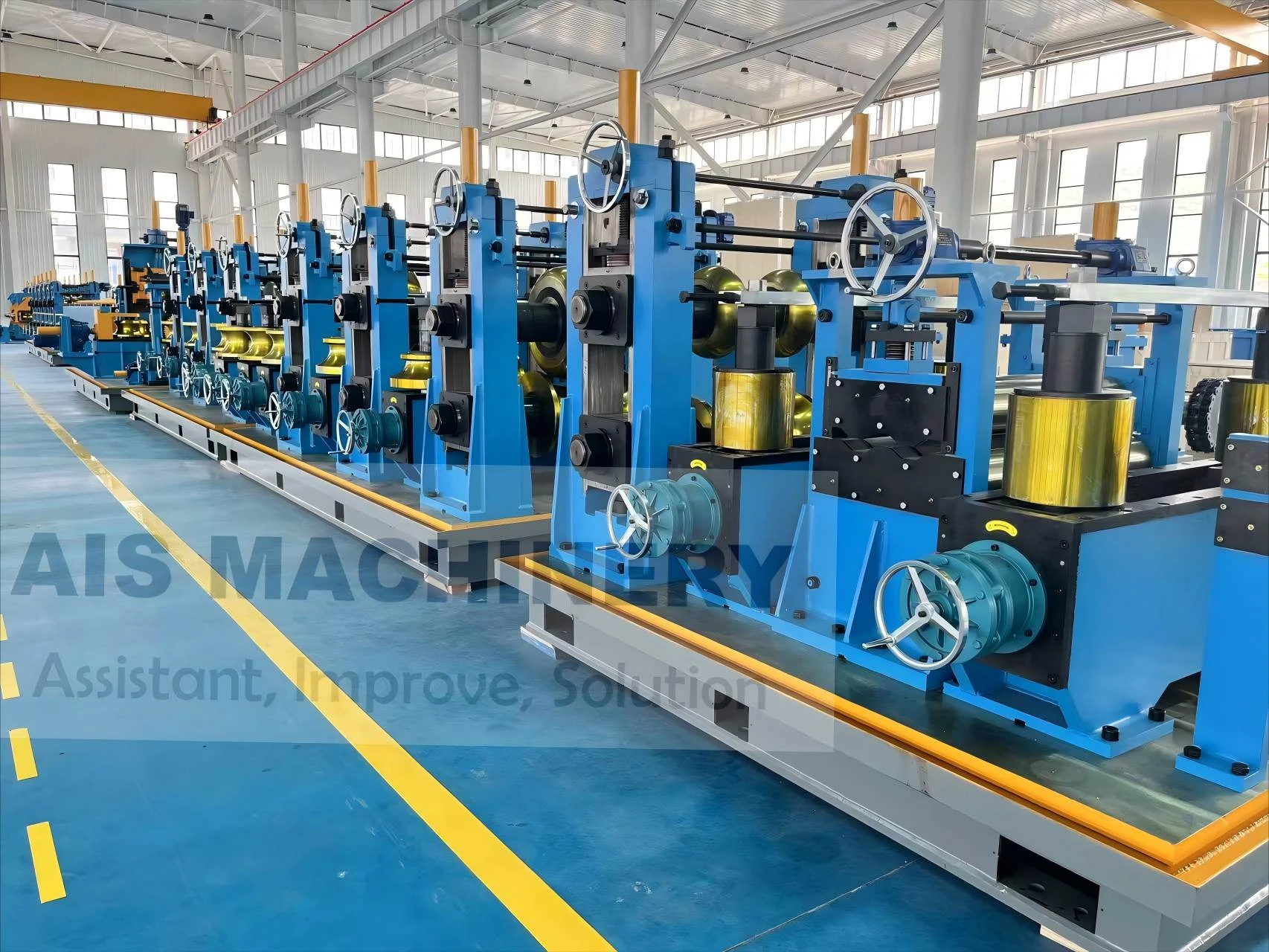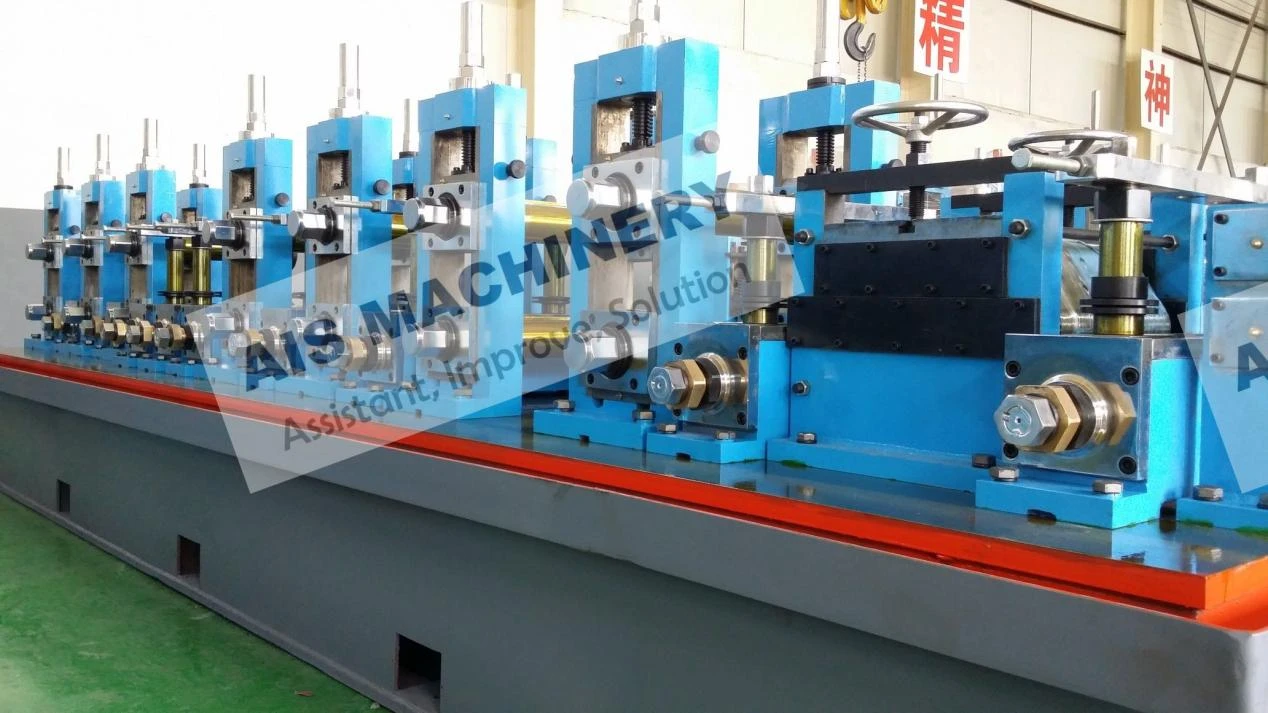Productio Range
|
Genus productionis
|
Quadratum et rectangulum cavum Sectiones
|
|
Quadratus cavum sectionem
|
Min 60x60mm, Max 130x130mm
|
|
Rectangulare cavum sectionis
|
Min 80x40mm, Max 100X160mm
|
|
Square and rectangle Tube Thickness
|
Min2.0mm, Max 5.0mm
|
|
Tubus Cut Longitudo
|
Min 6 meter, Max 12 meter
|
Line Specification
1. Technical Overview
Direct square forming (also known as direct forming to square or rectangular tube) is a tube mill process in which flat steel strip is directly formed into square or rectangular shapes without first forming into a round pipe. The entire shaping takes place in the form-and-size section, enabling a more efficient, accurate, and material-saving production for hollow structural sections (HSS).
2. Process Flow
Coil → Uncoiler → Leveling → Shearing & Welding → Accumulator → Forming Section (Direct Square) → HF Welding → Burr Removal → Cooling → Sizing Section → Flying Saw → Stacking
🔧 Detailed Steps:
-
Material Entry: Steel strip is leveled and joined via shear & welder.
-
Forming Section: Gradual deformation of flat strip into square/rectangular shape through roll forming – no round stage involved.
-
High-Frequency Welding: Weld seam generated along one edge (typically inner corner).
-
Weld Bead Removal: Internal and/or external trimming as required.
-
Cooling System: Water spray cooling to stabilize tube shape and microstructure.
-
Sizing Section: Final shaping and dimension correction; ensures angle sharpness and wall flatness.
-
Flying Saw Cutting: Length-wise cutting according to user-set lengths.
-
Output Table / Auto Stacker: Pipe collection and automatic alignment.
3. Technical Parameters
| Item |
Specification Range |
| Applicable Tube Shape |
Square & Rectangular (Direct Formed) |
| Tube Size Range |
20×20 mm – 120×120 mm (Square) /
30×20 mm – 160×80 mm (Rectangular) |
| Wall Thickness Range |
1.2 mm – 6.0 mm |
| Line Speed |
30–80 m/min (depending on size & thickness) |
| Material Grade |
Low to high strength carbon steel (≤ Q355 / S355) |
| Forming Method |
Direct roll forming (no round forming stage) |
| Welding Method |
High-Frequency Induction Welding |
| Dimension Tolerance |
±0.5 mm (width), ±0.15 mm (wall thickness) |
| Diagonal Deviation |
≤0.8 mm for 100×100 mm tube |
Note: Larger sizes (up to 250×250 mm or more) available on request using modular mill setups.
4. Advantages of Direct Square Technology
✅ Efficiency & Material Saving
-
Avoids round pre-forming, reducing tooling steps and energy consumption.
-
Saves up to 2–3% material by reducing corner stretching and less reshaping.
✅ High Product Accuracy
-
Achieves precise outer dimensions, excellent flatness of sides, and sharp corners.
-
Stable weld seam location along corner (more uniform structure).
✅ Tooling Flexibility
✅ Reduced Maintenance & Wear
5. Application Scope
This technology is suitable for manufacturers focusing on:
-
Hollow Structural Sections (HSS)
-
Mechanical & Automotive Frames
-
Steel Furniture Tubes
-
Scaffold Tubes / Guard Rails
-
Solar Panel Mounting Structures
-
Greenhouse & Agricultural Frames
Especially advantageous when production is focused on square/rectangular tubes only and requires high output, repeatability, and low running cost.
6. Frequently Asked Questions (FAQ)
Q1: Is direct square forming better than round-to-square?
A: For dedicated square/rectangular tube production, yes. It eliminates redundant forming stages and provides better efficiency. However, if the mill needs to produce both round and square tubes, round-to-square offers more flexibility.
Q2: Can this process handle high-strength or galvanized steel?
A: Yes. As long as the line is equipped with proper roll material (D2, Cr12MoV, or carbide), and forming passes are adjusted accordingly, direct square forming can handle Q345/S355, galvanized coils, and even certain AHSS grades.
Q3: What are the limitations of this process?
A: It’s not ideal for very small tubes (e.g., <20×20 mm) or extremely thin walls (<1.2 mm), as the corner formability and weld control become difficult without round shaping.
Q4: How is weld seam quality ensured without round pre-forming?
A: Through precise edge positioning before welding, and using automatic seam tracking systems with real-time correction. The weld seam is located along a corner, where stress distribution is relatively favorable.
Q5: What’s the typical tooling changeover time for a new size?
A: With manual roll change: 3–5 hours.
With quick-change cassette type: 30–60 minutes.
✅ Summary
Direct square forming is a highly efficient, cost-effective solution for large-volume production of square and rectangular tubes, delivering improved yield, precision, and structural consistency — especially when integrated with automatic control systems and modular tooling design.
The Flow of the Production Line
Forming section(Flattening unit +Main driving unit +Forming unit +Guide unit +squeeze roller)+ De-burr frame →→Cooling unit →→ Sizing unit and straightener
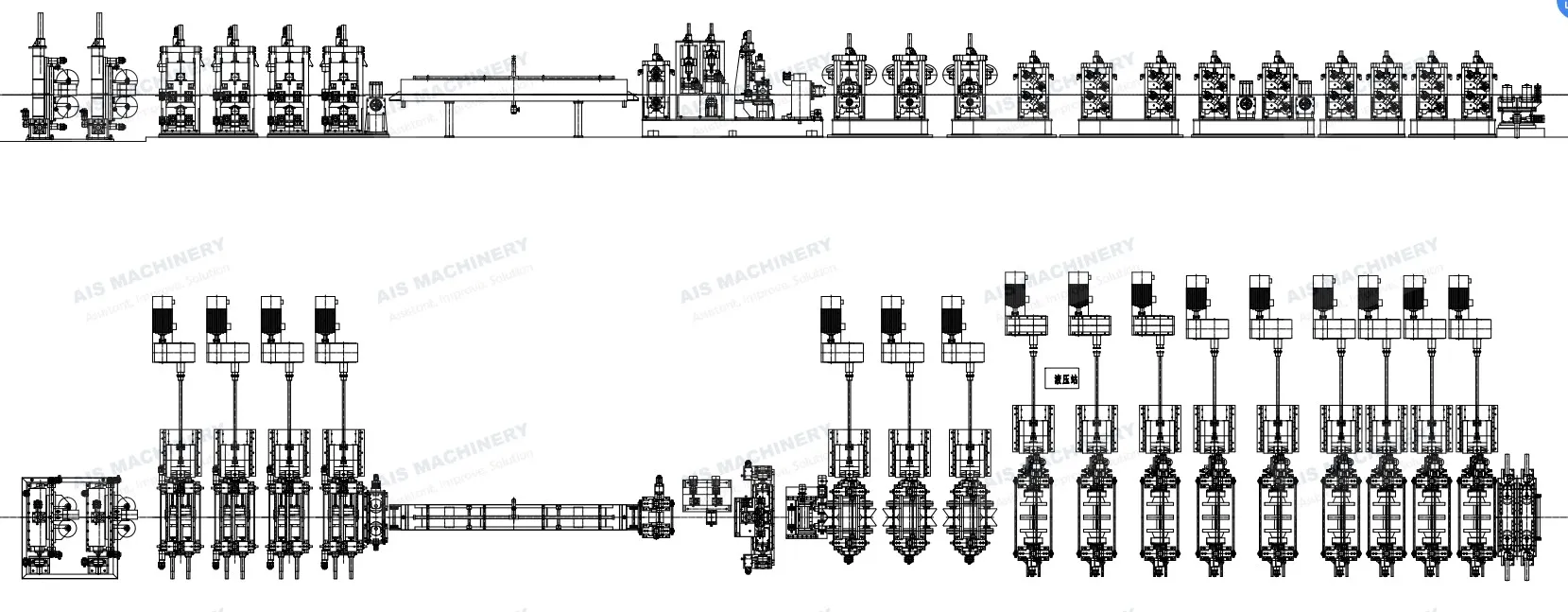
 Tel:86-15176910262
Tel:86-15176910262

